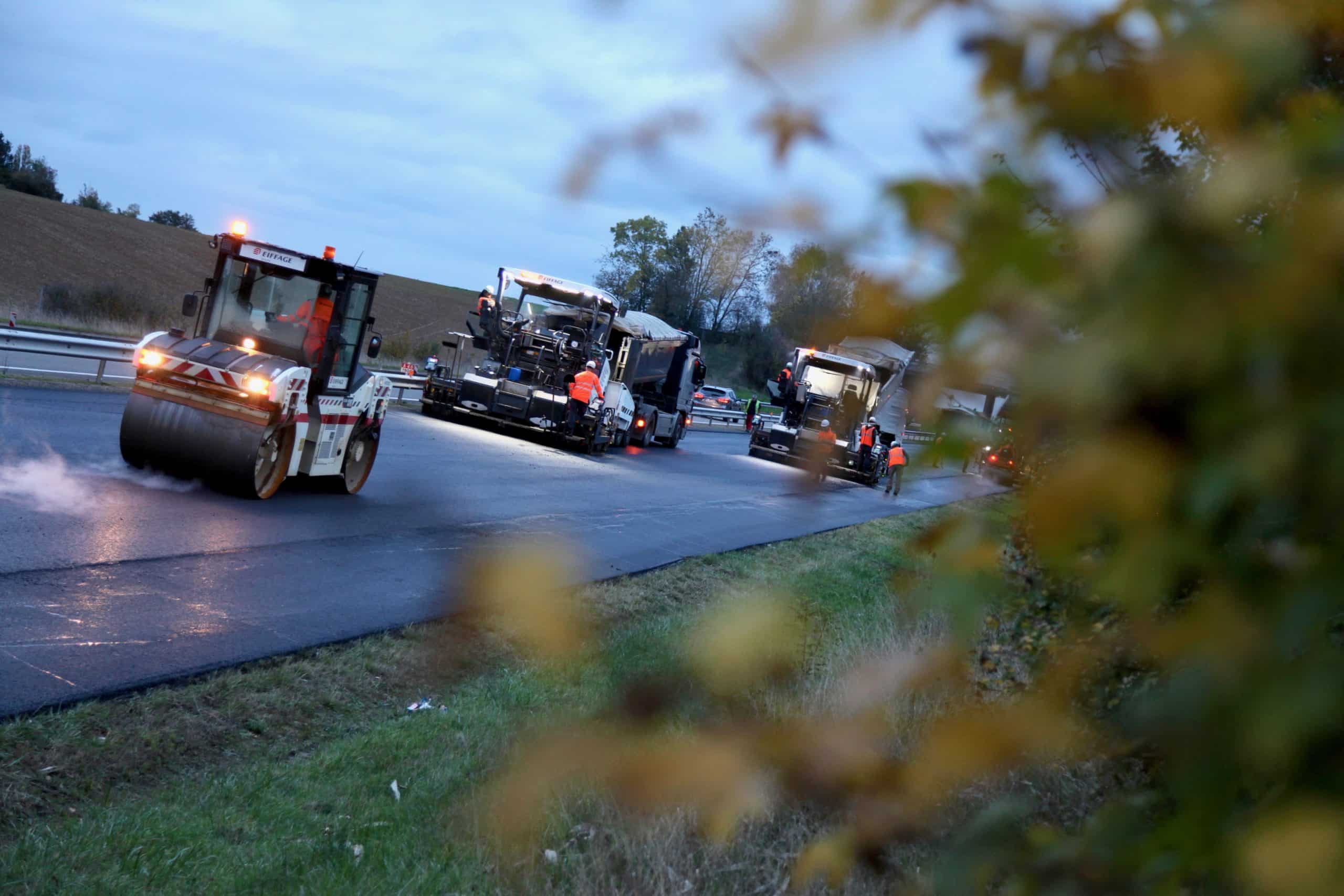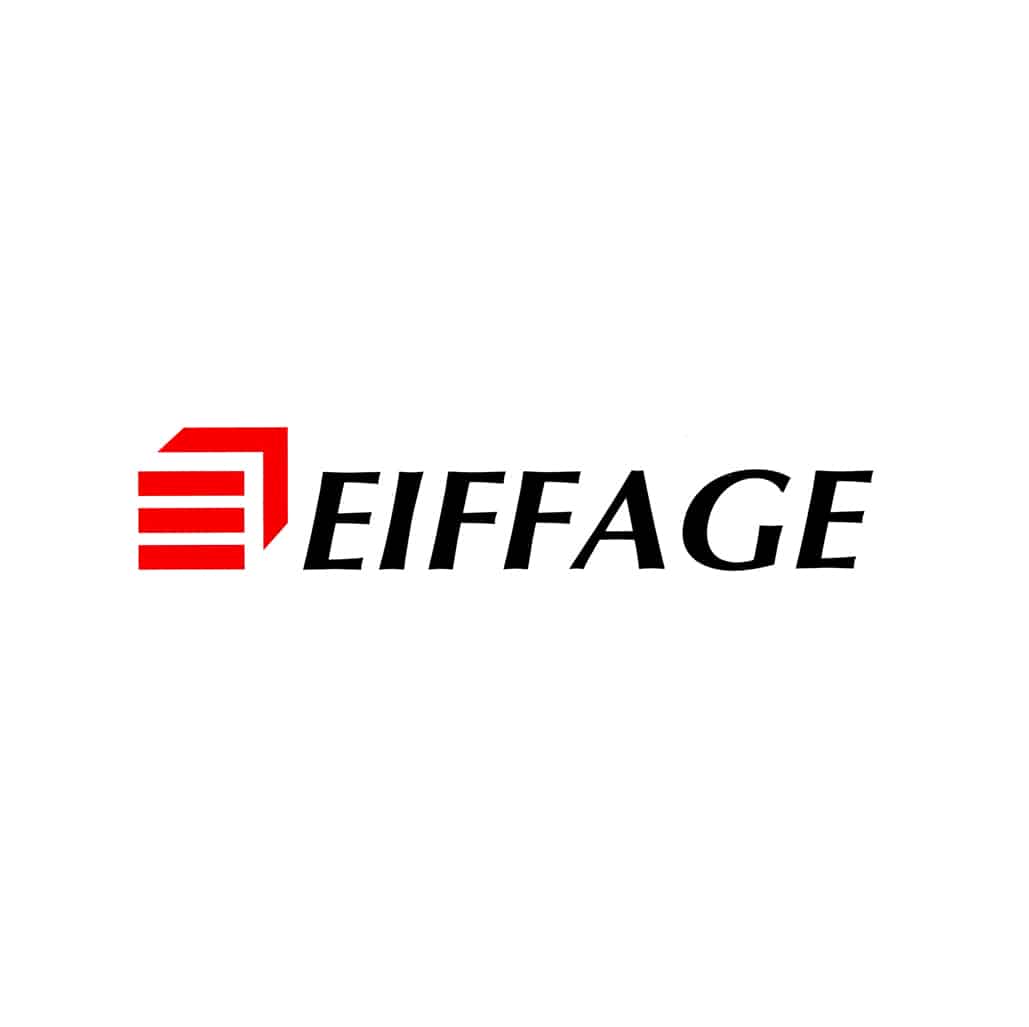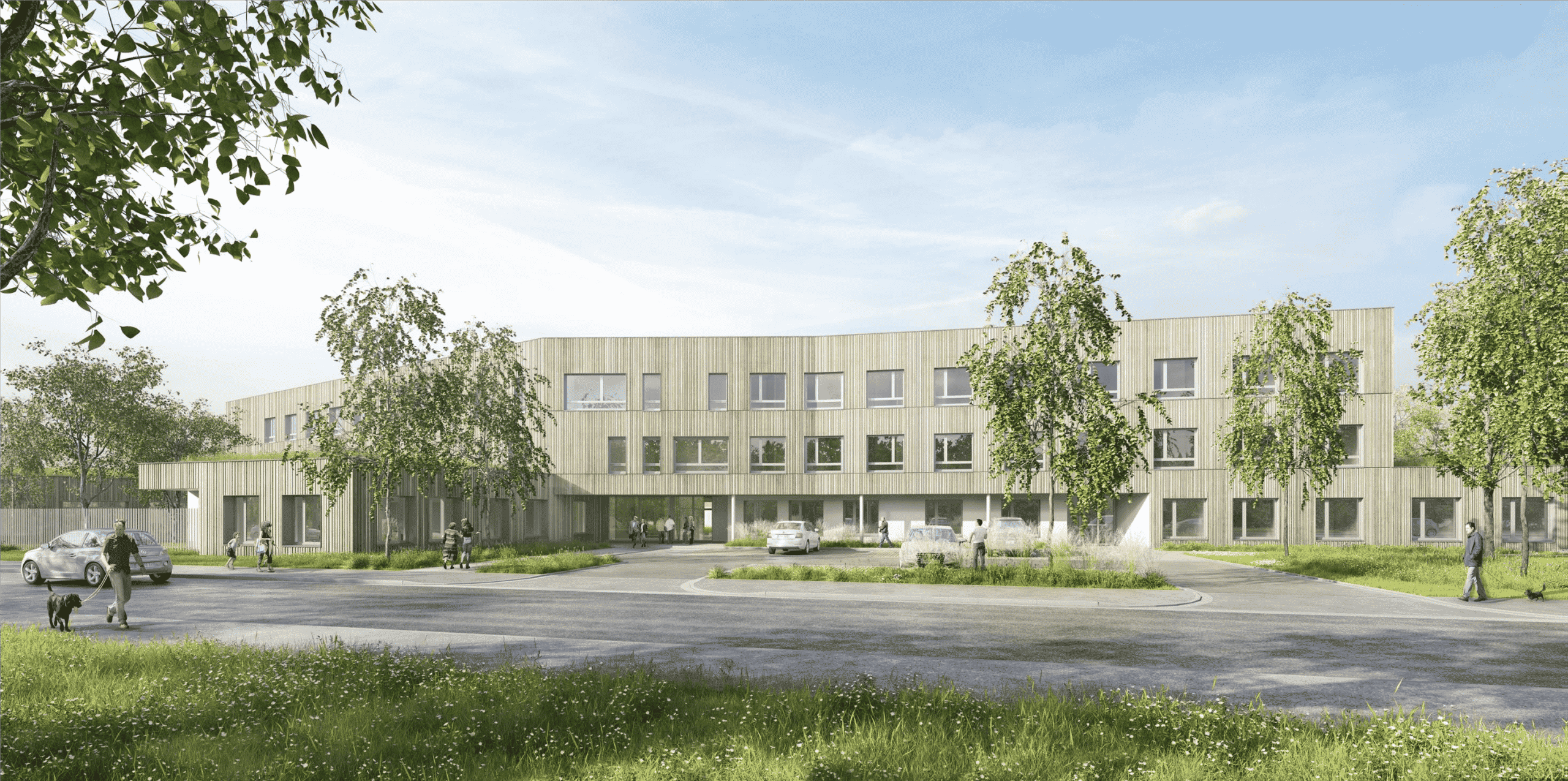
BIOPHALT, a high-performance plant-based asphalt Developed by Eiffage Route and Tested by APRR on the A40 motorway
Eiffage has developed a plant-based asphalt composed of a bio-sourced binde, derived from…

Construct a building that provides maximum energy performance and minimum carbon impact (E4 C2 performance – maximum level - E+C standard - http://www.batiment-energiecarbone.fr/). Demonstrate the building’s energy performance and promote development of these solutions.
Project carried out under a design-build contract. Below are the main members of the consortium having contributed to the design, Eiffage Construction being the lead contractor:
– CRR Architecture
– Eodd
– Sylva
– Ingerop
– Ecib
– Eiffage Energie Systèmes
The technical high school will accommodate 1,000 students and provide housing for 8 members of staff.
Efforts made in terms of the thermal design of the building’s outer skin and reduced energy requirements will enable the project to meet exemplary “passive” building performance standards.
The building will benefit from “100% renewable energy” with the exclusive use of wood for heating purposes (wood pellets) and all electricity consumption being met by the photovoltaic installations.
Thanks to the massive use of bio-sourced materials, the building will provide tangible carbon storage, which will drastically reduce its carbon impact.
Concrete base made from low-carbon concrete supplied by Vicat.
The straw-insulated wood frame walls are manufactured by Savare, a subsidiary of Eiffage Construction that specialises in wood construction (creation of a workshop close to the site to assemble the wood frame walls (MOB) and limit the carbon footprint of transportation). The straw is supplied by a farmer in Limagne.
The glued laminated wood structure uses a Douglas fir species supplied by Eurolamelle. The CLT walls and floors (Douglas fir) are being supplied by Piveteau.
The solid wood (Douglas fir) is being supplied by the Combrailles sawmill.
All the framework, structures and wooden floors are manufactured and installed by Eiffage Construction Auvergne.
Particular attention has been paid to the choice of products / suppliers / subcontractors in order to meet carbon objectives. This is the case in particular in terms of traceability of origin for the structural timber (92% from the Massif Central, 100% from France), straw (100% from the Limagne), and lava rock (100% from Volvic).
Quantity of bio-sourced materials: 148 kg/m² (compared to 36 kg/m² to achieve the level 3 bio-sourced buildings label for educational buildings, see https://www.legifrance.gouv.fr/jorf/id/JORFTEXT000026810976
“Reforest Action”: 2,000 trees replanted
Photovoltaic production: installation of 2,000 m² of panels assembled in France
Wood pellet boiler
High performance insulation using straw (R = 7.10m².K/W)
Recovery of rainwater for use in toilet blocks.
on which the project has a significant impact
Scope 1-Worksite emissions.
(lower thanks to the mobilisation of local players to reduce transport requirements).
Quantification: 265.9 tCO2eq.
Scope 3 – Upstream: Use of low-carbon concrete, mixed wood/concrete structure, particular attention paid to the choice of products / suppliers / subcontractors to meet carbon objectives
Downstream: E4 labelling (positive energy building):
Good insulation, in situ energy production.
Quantification :
12,120 tCO2eq. over 50 years of operation, i.e. 242.4 tCO2/year on average. (i.e. 15 kgCO2eq/year/m²)
A C1 building (“conventional” scenario today) with similar characteristics would have emitted approximately 28,126.4 tCO2eq.
Emission absorptions
Quantification : 50 tCO2/year
Avoided emissions : Compared to a building with C1 certification
Quantification : 320 tCO2/year, or over total lifetime 16,006.5 tCO2eq.
Calculation carried out according to E+C- standard not taking into account dynamic LCA.
Operating emissions are mainly related to:
– primary energy consumption (RT use): 10,486 kWhep/year, including energy production of 9,870 kWhep/year for self-consumption (EF: 45 gCO2/kWh for photovoltaics), the rest on the network (EF: 60 gCO2/kWh)
– heating and hot water: 100% biomass (wood pellet boiler) (EF: 0.027gCO2/kWh PCE), instead of a conventional solution (0.243 gCO2/kWh PCE)
Forest planting: The calculation described here is based on assumptions made by the Ecotree organisation: we take their value of 25 kgCO2eq/year average absorbed by a tree (it being acknowledged that this value varies throughout the life-cycle of the tree depending on age or external factors). It is important to keep in mind that the carbon storage calculation is approximate and provides more of an estimate than a comprehensive value.
Total investment by the AURA Region amounts to €57.5 million
Design: March 2019
Execution: August 2020
Delivery: July 2022
Clermont-Ferrand (Puy-de-Dôme)
The 16,000 m² establishment maximises the use of local resources, both in terms of manpower (local companies and subcontractors), construction methods (wooden framework from Massif Central forests and straw insulation from Limagne), and energy supply choices. Savare, a subsidiary of Eiffage Construction specialising in the manufacture of timber structures, chose to set up a workshop in the immediate vicinity of the site in order to make the best use of local resources. This workshop is set to remain open depending on market potential, with the opportunity for several permanent jobs.
The project therefore contributes to several SDGs:





In addition, the wood frame and compressed straw insulation walls benefit from a guaranteed French traceability label. Owners and customers rightly demand better knowledge of the origins of building materials used. For this reason, since 2017, Eiffage has voluntarily committed to a process of wood traceability from the forest to the construction site, which provides the highest levels of transparency for customers. Since 2017, the Sustainable Development and Transverse Innovation Department has been working with Swiss firm Product DNA, an independent expert in supply chain traceability. Product DNA traces materials from the design phase of the project, reconstructing their entire journey based on accounting documents, and publishes labels on delivery of the project concerned. These labels provide specific information on the origin of the supplies, transformation sites, and sustainable management of the resource used, stored in a tamper-proof blockchain system.
100% reproducible
Eiffage Génie civil Forézienne
Savare
Eiffage Energie Systèmes
Clévia
Eiffage Route
Eiffage Construction Auvergne
Vincent.dhuicq@eiffage.com

Eiffage has developed a plant-based asphalt composed of a bio-sourced binde, derived from…

The Eiffage group is building the Hypérion tower in Bordeaux (Gironde). The tower has a carbon footprint of 870 kg CO2 eq. / m² floor area, which is 45% less than a conventional building…

This project aims to build France’s 1st passive low-carbon EPHAD nursing home (Etablissement d’Hébergement pour Personnes Agées..

The project involved the application of BioKlair®, an eco-friendly and permeable road-surfacing mix, on a 2 km stretch of the ViaRhôna …
AFEP (Association of French large companies) is an association representing 111 of the largest companies operating in France. It participates in the public debate with the ambition to provide pragmatic answers in favour of the development of a competitive and sustainable French and European economy, conducive to the growth of all companies.